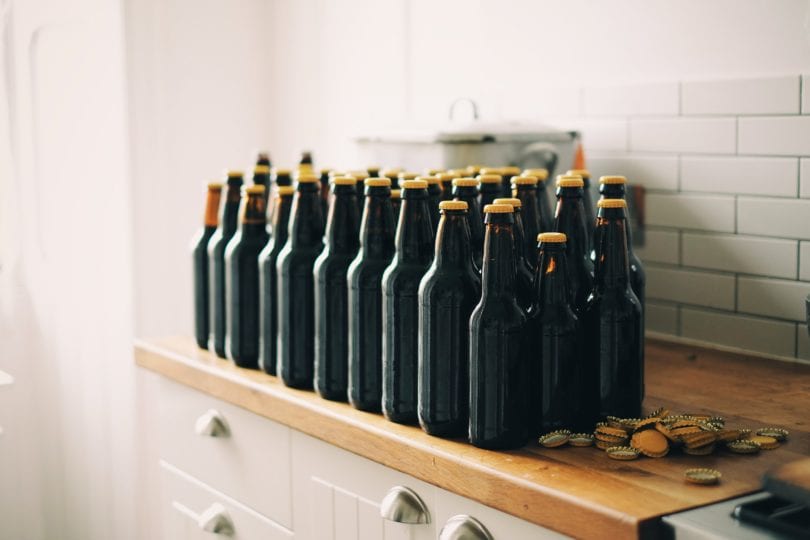As craft beer has exploded in tiny breweries across the country, conversations are being had across bar tops and at kitchen tables: why not brew our own? It seems like the possibilities are endless, so why not?
The thing is… it’s one thing to brew a rudimentary, fermented beverage that tastes mostly like beer. It’s another thing entirely to brew something tasty. So what do you need to consider before dropping a bunch of money on home brewing equipment? Start here with our home brewing tips:
1. The first thing to buy: a book
Although the inexpensive home brewing kit might tell you it has everything you need for your first brewing experience, it’s best to walk in with at least a little bit of knowledge of the terminology and necessary components of the process. Even the most basic “home beer brewing for beginners”-style book will give you a rundown of the steps involved in the process so you can make a mental map of how it will all play out spatially in your home as well as the equipment necessary.

2. Set up your space
You’ll need to have plenty of room in your kitchen to sanitize all of your supplies, boil and then cool your wort. Then, of course, you’ll need a warm, safe, dark place for your fermenters where the smell of fermenting yeast is acceptable (it lasts about a week) and it won’t be the end of the world if the fermentation airlock spews a bit. This means: keeping it in your bedroom closet, with your clothes, is probably a bad idea. Maybe the Man Cave would be a good spot? Or if you’re living in a true bachelor pad, perhaps a corner of your kitchen becomes the brewing station. Whatever your setup, prepare and clean all of the spaces you’ll use for your process so that when you come home with your yeast and other equipment, you’re ready to go and it won’t get dirty.

3. So you think homebrewing will save you money?
It might. But it might not. Brewing in small quantities, like a one-gallon batch (which makes ten bottles at a time), will cost you about the same as a six-pack of craft beer. Once you start getting up to five-gallon batches, the initial investment in equipment will be higher (8-gallon stock pots aren’t cheap) but the savings become more significant over time. Even so, getting into the craftier of the craft beers means buying fancy yeast, special malts, or extracts that will increase the cost of your brewing endeavors. It’s best to start with the intention of enjoying the process of learning how to brew beer at home and try to save money in other areas of your life.
4. Get the best supplies your budget will allow
What is needed to homebrew beer? You can span a range from very simple supplies for a one-gallon brew operation to more sophisticated bottling tools and wort coolers in larger-scale brewing adventures. Starting small can mean that you’ll already have a lot of the supplies you need, minus a fermenter and the ingredients for the wort, because you won’t mind manually pouring beer through a (fully sanitized!) funnel into ten bottles. But fifty bottles? You’ll want a siphon. Get clear on what you’re endeavoring to do, then get yourself some decent supplies — including glass fermenters. Then, over time, you can upgrade as you determine your brewing preferences.

5. Sanitize, sanitize, sanitize
Although the alcohol in your beer will usually be enough to kill any nasties, bacteria or other contaminants will make your beer just taste bad. Pouring out a bottle (or a whole batch) of beer that went bad is no fun, so make sure you’re a total stickler for the sanitation process. Wash your hands a million times, make sure you sanitize the caps and the capper, and if it smells/tastes weird…. Don’t drink it.
Now that you have a better understanding, it’s time to start looking for home beer brewing supplies. If you have a local brew supply company, that’s ideal since they’ll be able to answer your questions. But if not, you’ll be on a mission to piecemeal together the components you need. Good luck!








